The assumption that consecutive primes can be of any classes,
P=6n+1 and P=6n-1, independently only because they are equally likely creates the probability of being both of consecutive primes of the same class(having the gap between them multiple of 6) equal
1/2 (Ares, Saul, and Mario Castro. Hidden structure in the randomness of the prime number sequence. arXiv:cond-mat/0310148 v1 7 Oct
2003
http://www.mpipks-dresden.mpg.de/$\sim$
saul/papers/primes.pdf ).
It is of very important role that all primes are distributed in groups of the same class beginning from the size equal 1 (singles) to maximal one in a range of primes. In the range until 100,000,000, the maximal size of such groups is equal 16. This size increases when increases a range, and a number of primes in a groups of bigger size is less than a number of them in a groups of smaller size.
Groups of the same class create inside them differences of consecutive primes multiple of 6. The first differences, gaps,
G0 exist inside groups of the size more than 1 (nonsingles). The second differenses, variations,
V0 do inside groups of a size more than 2.
Theory
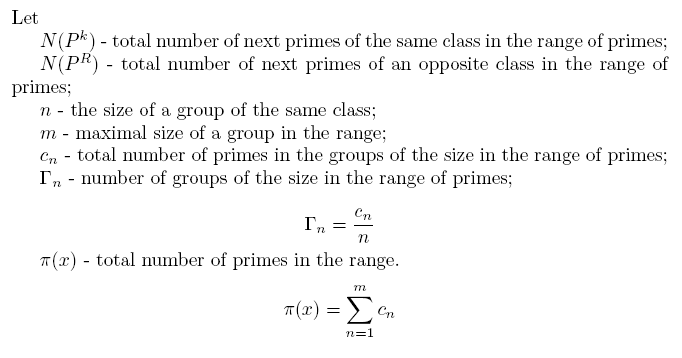

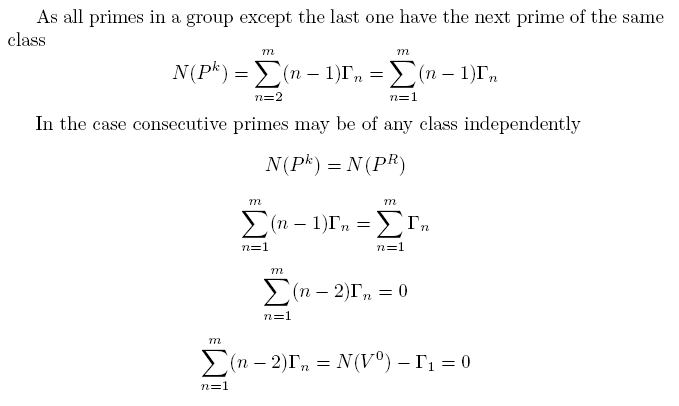

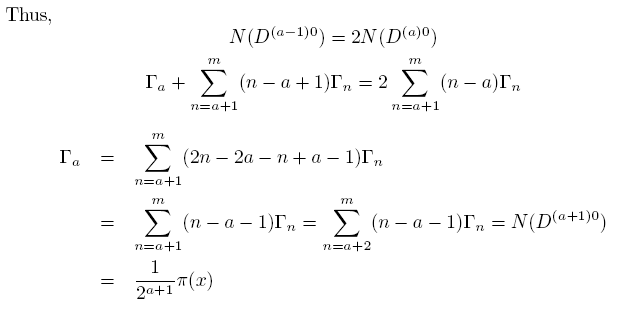
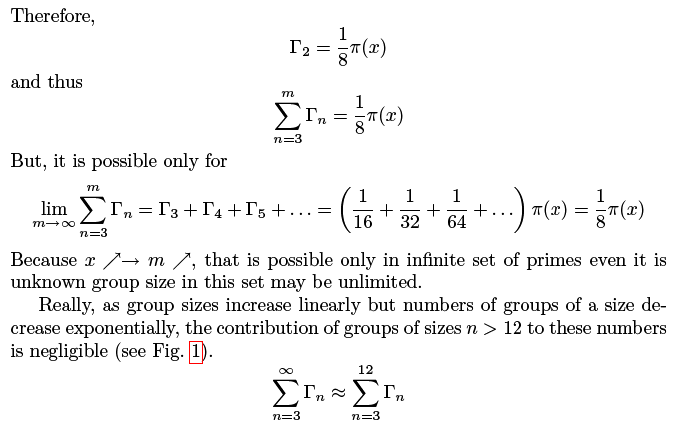
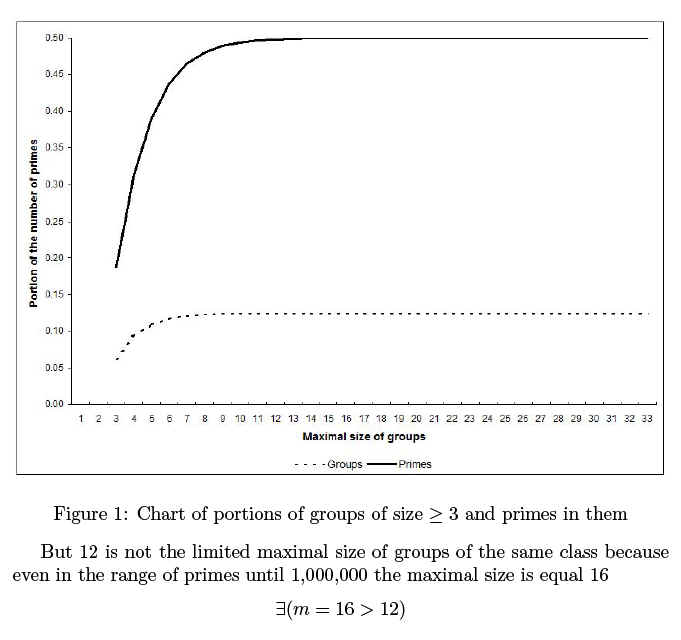
Thus, appearing of consecutive primes of any class independntly is possible when x= ¥ (m=¥) , i.e. for the infinite general primes' set only. The condition N(Pk)=N(PR)=½p(x) approaches to true as x®¥ but reaches it never.